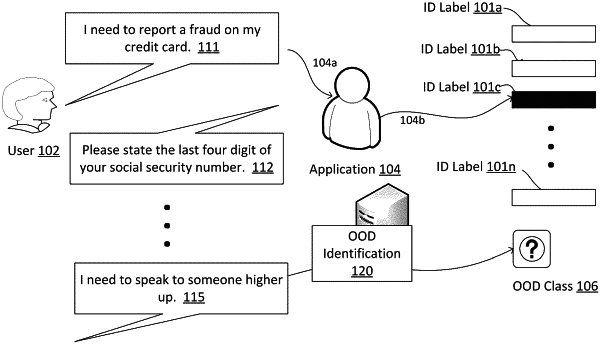| CPC G06N 3/08 (2013.01) [G06F 40/40 (2020.01); G06N 3/045 (2023.01)] | 20 Claims |

|
1. A method for distilling knowledge from a first neural network to train a second neural network, the method comprising:
receiving a plurality of training samples corresponding to a first set of pre-defined classes from a given dataset;
retrieving the first neural network that is pre-trained to classify input samples into the first set of pre-defined classes;
obtaining a first plurality of classifications by feeding the plurality of training samples to the first neural network;
transforming, using an out-of-distribution (OOD) sample generation module, one or more of the plurality of the training samples into one or more out-of-distribution (OOD) training samples, wherein the transforming further includes:
computing, using a term frequency-inverse document frequency model, inter-class word importance probabilities of one or more words of a training sample in the plurality of training samples, wherein the inter-class word importance probabilities indicate that the one or more words distinguish between the first plurality of classifications;
computing, using a discriminator model, in-distribution word importance probabilities of the one or more words of a training sample in the plurality of training samples, wherein the in-distribution word importance probabilities indicate contributions of the one or more words to a classification in the first plurality of classifications;
identifying a set of the one or more words within the training sample based on the inter-class word importance probabilities and the in-distribution word importance probabilities; and
replacing the set of the one or more words within the training sample with one or more random words;
generating a second set of classes by adding an out-of-distribution class to the first set of pre-defined classes; and
training the second neural network defined with the second set of classes based on the plurality of training samples, the one or more out-of-distribution training samples and the first plurality of classifications from the first neural network.
|